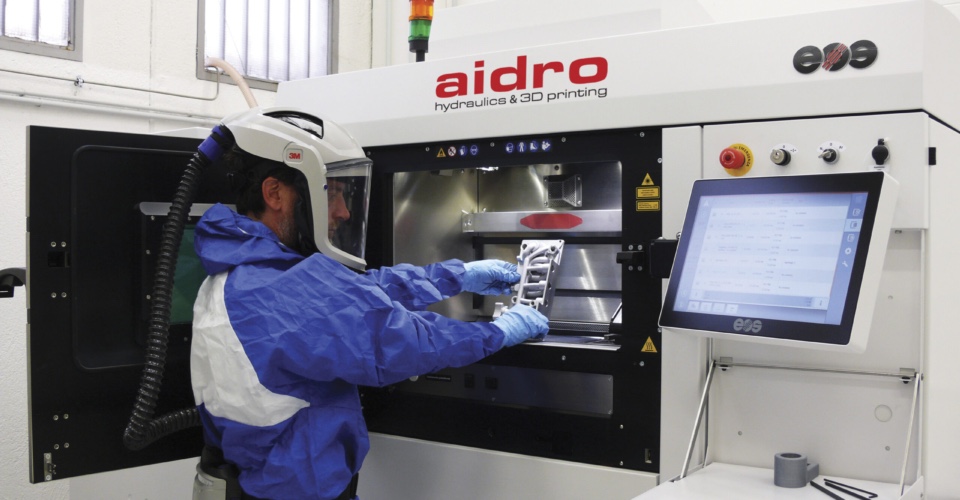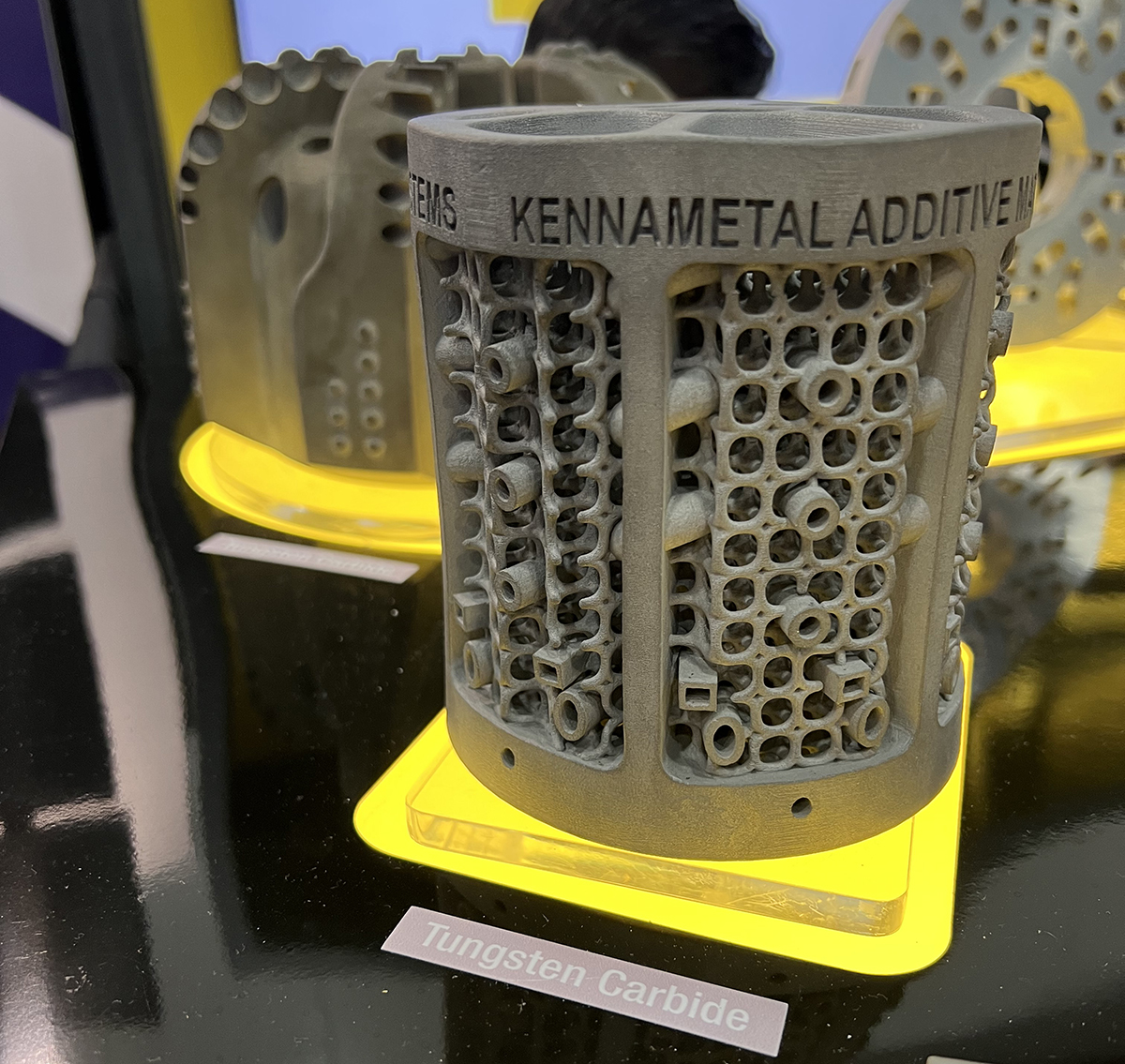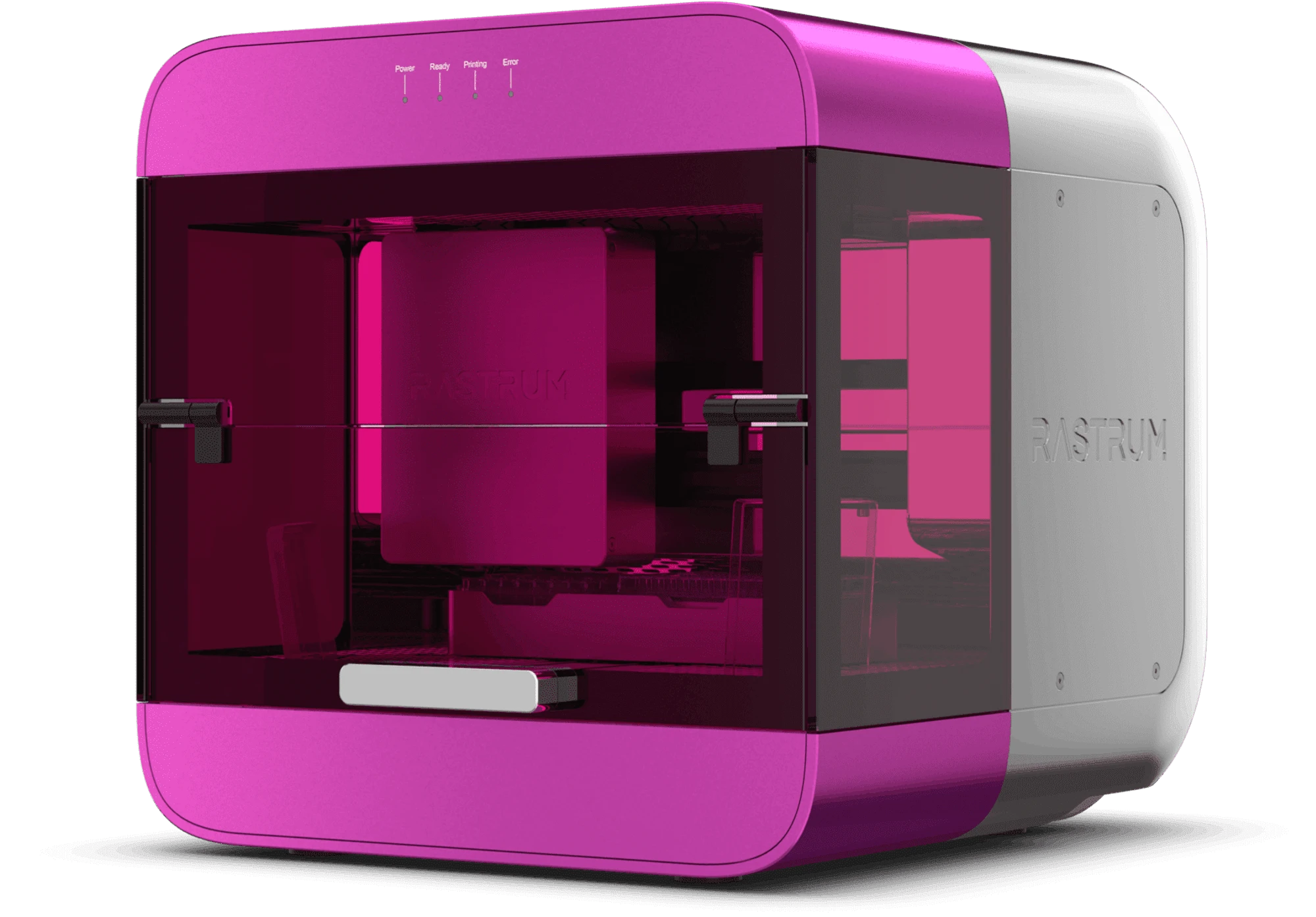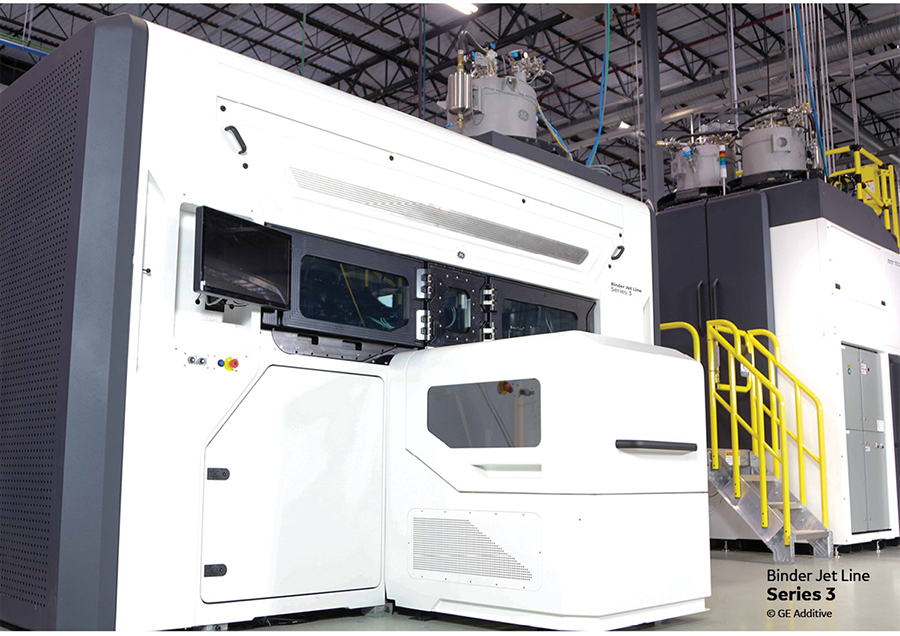3DPrint.com | The Voice of 3D Printing / Additive Manufacturing |
- Desktop Metal Subsidiary Becomes 3D Printing Supplier for Italian Defense Giant Leonardo
- GE’s Metal Binder Jet 3D Printing Is on the Market with Kennametal
- Inventia Snags $3.2M in New Funding to Commercialize Bioprinter
| Desktop Metal Subsidiary Becomes 3D Printing Supplier for Italian Defense Giant Leonardo Posted: 06 Jun 2022 06:00 AM PDT Aidro, an Italian company specializing in the design and production of hydraulic and fluid power systems, has been named a qualified supplier with additive manufacturing (AM) techniques for the helicopter division of Leonardo, the world's eighth largest defense contractor, based in Rome. Aidro is just the second supplier to have been given this qualification by Leonardo, to use AM in its production line. Founded in 1982, Aidro is one of the companies purchased by Massachusetts-based Desktop Metal last year, amid its spree of acquisitions. Along with aerospace, Aidro utilizes AM to produce components for multiple other sectors, including oil and gas. The company has been employing binder jetting and laser powder bed fusion (LPBF) systems since 2017.  In 2018, Aidro received AS/EN 9100 certification for its AM process for hydraulic components. The AS/EN certifications are based on a set of quality control standards determined by DNV, the world's largest registrar and classification society. The AS/EN are the most widely used standards by original equipment manufacturers (OEM) in the aerospace industry.
Although AM techniques have been widely adopted by the aerospace industry to an extent, it seems like long-term, the technology could have a proportionally significant impact in terms of its effects on helicopters, specifically. This is not just the case concerning manufacturing, but equally, concerning maintenance, repair, and overhaul (MRO). While the latter is one of the most crucial aspects of the aircraft industry in general, it's possibly most significant when it comes to helicopters, which are plagued by the need for constant upkeep and, thus, inordinately high MRO expenses. Digitizing helicopter supply chains would help streamline those processes, and could eventually make significant reductions in the cost of helicopter operating services.  Further, there's the light-weighting of parts. Yet again, this is an area where a feature of AM that makes the technology attractive to the aircraft industry is particularly advantageous for the helicopter sector. Helicopters are significantly more dangerous than airplanes, and the disastrous impact of even slight increases in weight on helicopters is one of the main reasons why this is so. Therefore, in addition to aiding greatly in engineering efforts to making them more fuel-efficient, light-weighting should be pivotal to long-term improvement to helicopters' safety track records. It's striking the extent to which Desktop Metals' acquisitions have driven the company along lately. It may turn out that Desktop’s acquisitions are stronger than its initial printer manufacturing capabilities. Certainly, it seems to be going into the right spaces. In addition to Aidro and helicopters, going into nuclear with its purchase of ExOne seems to be a genius move at the moment. It's going to be extremely interesting to see over the next few years, if Desktop is just a loose collection of 3D printing businesses, or if a strategy holding together all its various pieces is revealed. Images courtesy of Aidro The post Desktop Metal Subsidiary Becomes 3D Printing Supplier for Italian Defense Giant Leonardo appeared first on 3DPrint.com | The Voice of 3D Printing / Additive Manufacturing. |
| GE’s Metal Binder Jet 3D Printing Is on the Market with Kennametal Posted: 06 Jun 2022 05:30 AM PDT Kennametal recently announced it has joined GE Additive's Beta Partner Program, focusing on advancing its binder jetting capabilities in cemented tungsten carbide—and expanding the range of possibilities for use of the technology across such industries as oil and gas and mining. To learn more while at RAPID+TCT 2022, 3DPrint.com was on the ground with the combined GE Additive and Kennametal teams, including Brian Birkmeyer, Product Line Leader for Binder Jet at GE Additive, as well as Jay Verellen, General Manager of Additive Manufacturing at the Kennametal Infrastructure Business Group. With the latest news as a jumping off point, we learned some interesting details about both Kennametal's additive operations, as well as GE's metal binder jetting program. Kennametal Advances in Metal Binder JettingVerellen explained that what drives the company's decision making is the needs of its customers. If a client has a specific need, Kennametal will apply its materials science expertise, particularly in tungsten carbide and cobalt-chromium (branded as Stellite), to address that need. Primarily, this means subtractive and formative manufacturing of these materials, but, with the establishment of Kennametal's additive division in 2019, the company has increasingly been leveraging their innovation in 3D printing. This has resulted in thousands of Kennametal 3D printed parts already in the field and running. The firm turned to GE Additive to help advance and scale its existing binder jetting capabilities.  A 3D printed tungsten carbide part demonstrating the complexity and weight reduction possible for an extremely heavy metal. For over a year, Kennametal and GE Additive collaborated on the technology. This began with the Kennametal team working with GE at its own facility. Once sufficiently developed, A GE metal binder jetting system for tungsten carbide was delivered to Kennametal's own site for use in development and production. In order to produce tungsten carbide parts, the company 3D prints tungsten carbide with a cobalt binder, resulting in a fully dense part. The percentage of cobalt can be varied depending on customer needs, including 17 percent and 13 percent varieties. The less cobalt there is in a formula, the greater the wear resistance. The tougher variety also includes ingredients that increase corrosion resistance, such as nickel and other materials. KAR85 is Kennametal's most corrosion- and wear-resistant solution for truly next-level performance. Kennametal is able to offer its customers what Verellen referred to as a "end-to-end component solutions," meaning everything from the design to the finishing of the part:
Of course, there are pre-manufacturing design considerations to be made for 3D printing tungsten carbide components, but there's also in process and post-process considerations to be made. This includes sintering and taking into account the shrinkage that will occur. For this particular issue, GE has a homegrown software solution called Amp, released at Formnext 2021, which has been modified for use with binder jetting. GE's Series 3 Metal Binder Jet 3D PrinterWhile talking to the team, first and foremost on my mind was the commercial release of the binder jetting platform, the third generation of which was teased during the Kennametal announcement. I quickly learned that, while the technology is still being rolled out in a beta program, it is essentially on the market already. A company as large as GE isn't necessarily selling its binder jetting machines to every interested party. Instead, it is performing a strategic roll-out with key customers in different verticals: Cummins for power generation and automotive, Wabtec for rail, Sandvik for mining, and Kennametal for industrial applications when wear and corrosion resistance are critical. "The key for us across our beta partner network is different folks with different end applications and, in many cases, different materials. What’s really nice [working with Kennametal] is that we are able to add another company with great material expertise in a new material for use on our platform. The beta partner network has helped us focus on customers who really want to bring the technologies production—companies who really want to drive that application space forward and actually have an eye for taking a component or a material into scale production," Birkmeyer said. "Some have said that we're being secretive, which we’re not. We’ve always said we’re not in any rush to launch the machine." With that in mind, the GE team acknowledged that they couldn't give an exact date for the general release of the machine, except to say that it was "coming soon," alluding to an announcement sometime this year. However, Cummins is commercializing an engine component made with the technology. So, though we have yet to see an industry-wide roll-out of the platform, we may already be feeling its effects. The post GE's Metal Binder Jet 3D Printing Is on the Market with Kennametal appeared first on 3DPrint.com | The Voice of 3D Printing / Additive Manufacturing. |
| Inventia Snags $3.2M in New Funding to Commercialize Bioprinter Posted: 06 Jun 2022 05:00 AM PDT After announcing a Series B round last January, Sydney-headquartered biotech startup Inventia received an additional AU$4.4 million ($3.2 million) from Australian pension fund giant HESTA. This latest investment brings Inventia's total funding to over AU$50 million ($36 million), making it the country's best-funded bioprinting startup. According to a statement by co-founder and CEO Julio Ribeiro, the company will use the money to drive the commercialization of its award-winning Rastrum 3D bioprinter and an ongoing expansion into the U.S. market. Furthermore, Ribeiro said this investment could encourage other super funds to engage with Australia's growing and thriving startup scene.  Inventia’s bioprinting platform Rastrum. Image courtesy of Inventia. Inventia’s bioprinting platform Rastrum. Image courtesy of Inventia.The country is home to some very innovative startups in the 3D printing universe, like healthcare newcomer 3D One Australia, a radiation oncology materials and applicators developer; Titomic, a firm that uses cold spray to 3D print, or Melbourne-based metal AM company SPEE3D. However, even though the country has several startups working at the core of the modern private space industry and leading the way with large-scale manufacturing for the defense sector, there are very few startups in the bioprinting realm. Most of Australia's advances in bioprinting technologies have come from researchers in academia, institutes, and university hospitals. Most notably, from the University of New South Wales, the University of Melbourne, Murdoch Children's Research Institute, Queensland University of Technology, and primarily Australia's University of Wollongong, led by world-renowned bioprinting expert Gordon Wallace. So, Inventia has the upper hand when it comes to bioprinting startups at a national level. Unfortunately, other promising businesses like Melbourne-based Sonic Regen or MyoFab have ceased to operate in the last couple of years. The pink bioprinterWhen it comes to designing bioprinters for cancer research, Inventia says it knows how to do it well. Its flagship Rastrum system is the result of years of research and is built around digital bioprinting technology for fast, scalable, and reproducible printing of 3D cell constructs. When Ribeiro, along with co-founders Aidan O'Mahoney, Cameron Ferris, and Philippe Perzi, launched the company in 2013, they expected their creation to remove the need for time-consuming manual labor of medical lab workers. Instead, the resulting machine provides a faster way to recreate tumor models. Thanks to a combination of speed and precision, Rastrum can produce cell models in a matter of hours that can't otherwise be created. More importantly, Ribeiro told 3DPrint.com during a 2020 interview that the device "is gentle and uses less cells than other 3D cell model approaches, which is beneficial when handling precious patient derived cells or sensitive neural cells." Up until now, the pink printer has won one of Australia's major design awards, the prestigious 2019 Good Design Award of the Year, and has been used in a wide range of research areas by Inventia customers and collaborators, particularly in immuno-oncology cancer research on solid tumors looking at the interaction of the immune cells with cancer cells, as well as for drug screening to study the interaction between drugs and cells. This latest investment from HESTA is part of a successful series B fundraise led by Blackbird Ventures with a significant reinvestment from Skip Capital, which raised AU$35 million ($25.2 million). Moreover, it marks the first direct investment made by a super fund and is expected to drive economic jobs and growth. Actually, funding from Inventia's previous rounds has already helped the company grow its team from 36 employees to more than 50. But the ultimate business plan is to increase its workforce to 150 by the end of 2024 and strengthen its presence in the U.S., where the biomedical research and drug discovery markets are currently estimated to be worth more than $40 billion. With new funding coming in, this could all be possible sooner than expected.
Australian pension funds, like HESTA, have an excellent opportunity to invest in local businesses, helping the economy thrive. According to the latest Intergenerational Report, Australia's superannuation system is expected to be worth $34 trillion by 2061, making it the fourth-largest pension system in the world with assets that consistently deliver strong performance. So there is an incredible capacity to leverage opportunities that local funds would otherwise not be able to tap into. Through the Inventia-HESTA partnership, not only will Inventia be able to scale its team, provide more bioprinting products and expand its global reach, but it will also leave the door open to other super funds that want to engage with them and Australia's healthcare startups in general. The post Inventia Snags $3.2M in New Funding to Commercialize Bioprinter appeared first on 3DPrint.com | The Voice of 3D Printing / Additive Manufacturing. |
| You are subscribed to email updates from 3DPrint.com | The Voice of 3D Printing / Additive Manufacturing. To stop receiving these emails, you may unsubscribe now. | Email delivery powered by Google |
| Google, 1600 Amphitheatre Parkway, Mountain View, CA 94043, United States | |



0 comments:
Post a Comment